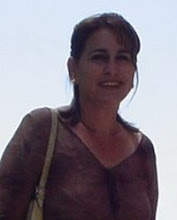Five decades and four years have passed since the bloodthirsty Colonel Fermin Cowley Gallegos, under the dictartorship of Fulgencio Batista, assassinated 23 young men in the last days of December of 1956, a painful moment in the history of Holguin.
Days later after the landing of the Granma yacht, a brutal repression was carried out against those that opposed the tyranny, whose sad history began on December 23rd and ended on the 26th with the death of the last of the revolutionaries included in the dictatorship´s black list.
In the northern area of the former Oriente province in the territories known today as Holguin and Las Tunas, two men were savagely tortured and killed.
Operation Christmas Gift was a macabre plan organized by Cowley, head of the military Regiment in Holguin, as a reprisal for the revolutionary actions carried out days before like the uprising on November 30th in Santiago de Cuba and the landing of Granma Yacht two days later.
Members of the 26 of July Movement and the Socialist People´s Party, workers, union leaders and many young people without political affiliation, were savagely tortured and its bodies abandoned in highways, under bridges or hanged on trees.
The dictatorship´s strategy of smothering the fire lit with the landing of the Granma Yacht and provoking terror among the population never succeeded. The main people responsible of those assassinations would pay for their crimes on November 23rd of the following year when a commando belonging to the 26 of July Movement made justice.
Since then, the days of horror lived by the population and family of themassacred humble revolutionaries are known as the Bloody Christmas.
Each December 24th, the people of Holguin, in representation of Cuba, pay tribute to the martyrs of that monstrous event with a march to the obelisk built in their memory in the eastern city.
Tuesday, December 28, 2010
Thursday, December 9, 2010
“Looking for Hemingway” in Cuba

Italian painter Franco Azzinari, who declares himself to be in love with Cuba, its culture and its people, will open the exhibition “Looking for Hemingway” on December 10th at Finca Vigía, the place where the writer lived in Cuba.
Azzinari has visited the island 59 times since 1992 and has painted some 200 paintings linked to his experiences on the island.
He said that when he visited Finca Vigía and met Cojimar’s fishermen, some of whom had met Ernest Hemingway, he became inspired and painted portraits of them, the places related to the U.S. writer, and the flamboyant trees he admired so much.
He also expressed that he has already received proposals to exhibit these pieces in several universities and plans to bring the topic of Hemingway and Cuba to many centers for higher studies in the world.
Azzinari specified that he has never met the 1953 Nobel Literature Prize winner personally, but that he was a friend of Gregorio Fuentes, the skipper of his yacht El Pilar, who was very close to the notable writer.
He also visited the places in which Hemingway used to fish marlins and swordfish in Havana, as well as Kenya, where he contacted members of the masai tribe that participated in the hunting safaris organized by the writer.
With respect to his artistic work, he declared that he has never worked for money and that he keeps most of his pieces, many of which are located in a personal museum that exists in the city of Calabria, following an initiative of the municipal administration of Altomonte in Cosenza.
Wednesday, December 1, 2010
In Cuba, the people is the one who decides

Today, the first of December, party organizations begin the debates on the Draft Guidelines for the Economic and Social Policy of the Party and the Revolution, a process that will include, until February 28, all the labor unions and communities across the country.
What does this debate means?
It means people's participation in the Sixth Congress of the Communist Party to be held in April, 2011, and the possibility that each citizen expresses a view, without restrictions, even if they are not agreed.
Nobody should be left with an opinion to express, much less to be prevented from expressing it. The party demands the maximum of transparency to all organizations, a greater clarity in the analysis, clarifying all the doubts and concerns we have at the very heart of the Revolution.
To participate in the country's destiny is the right of every Cuban, and is also the lightest exercise of socialist democracy and the clearest expression of clarity of the Revolution and its unity with the people.
And it must be the people, because what is at stake is the future of the Cuban nation, which we only guarantee by preserving and developing the social system that we have built from those epic days in the Bay of Pigs, and that we ratified in the Constitution of the Republic, proclaiming that socialism and the political and social system included in it, are final.
On November 8, at the ceremony commemorating the tenth anniversary of the Cooperation Agreement between Cuba and Venezuela, while announcing the Sixth Congress, comrade Raul expressed: "Congress is not only the meeting of those who are elected as delegates, but also the prior process of debates by the membership and the entire population of the guidelines or decisions to be adopted in it. That's why the 6th Congress will be of the entire membership and all the people who actively participate in making key decisions of the Revolution. "
The debate started is the quintessence of the beginning of our Revolution: the people is the one who decides.
Subscribe to:
Posts (Atom)

